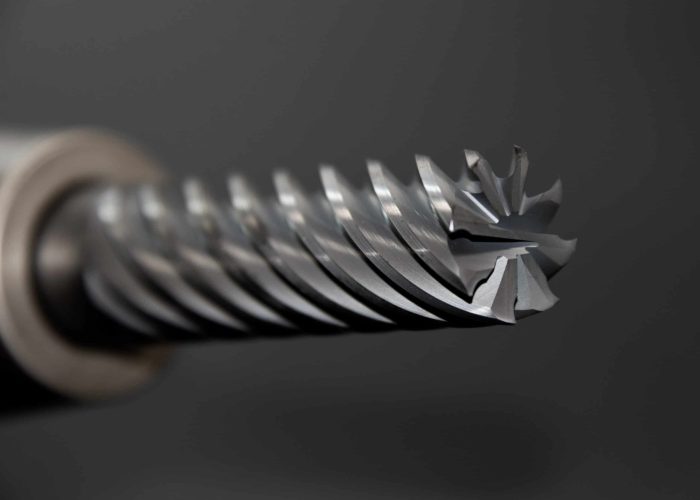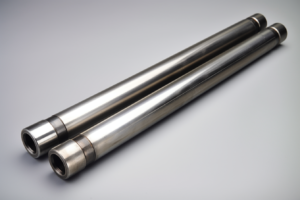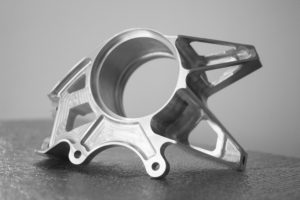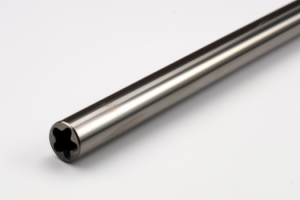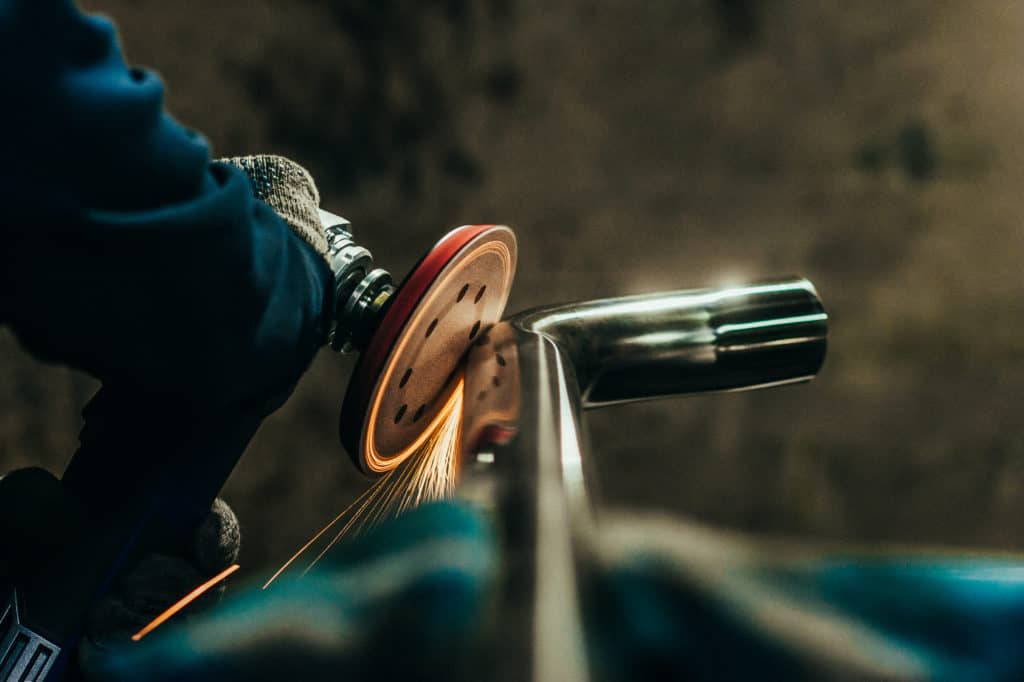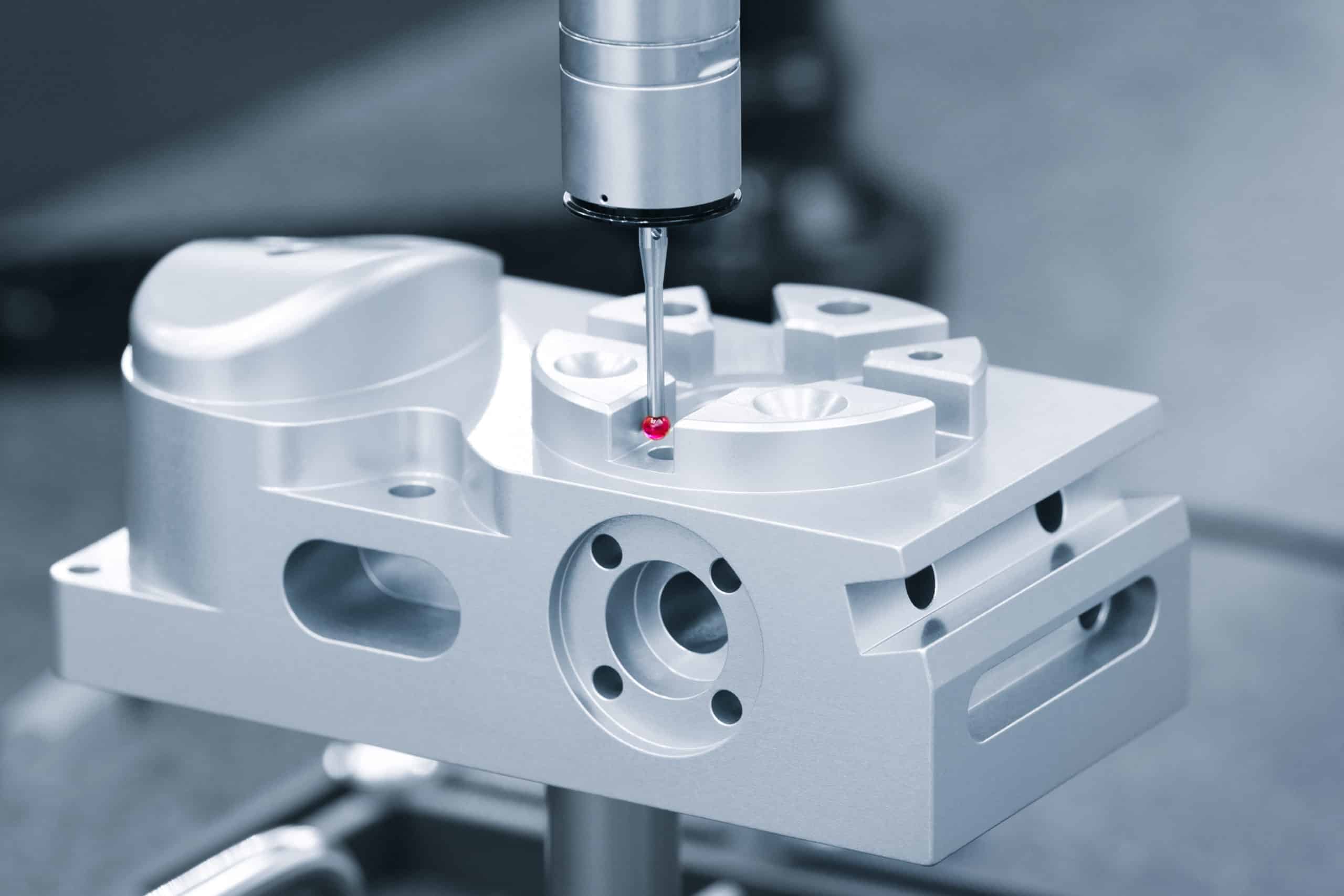Table of Contents
Introduction
Importance of Removing Broken Taps
Extracting broken taps is critical for anyone involved in manufacturing, construction, or DIY projects. When taps break, they can damage internal threads, rendering a threaded hole useless and potentially compromising the integrity of the entire project.
Additionally, broken taps can be challenging to remove, making understanding the proper techniques and tools required for successful removal essential. By learning how to remove broken taps, you can save time and resources and prevent further damage to your workpiece.
Causes of Tap Breakage
Taps break for a variety of reasons, some of which include:
- Improper use: Taps are designed to cut threads in a specific manner. If excessive force is applied or the tap is not aligned correctly with the hole, it can cause the tap to break.
- Poor quality materials: Low-quality taps made from inferior raw materials may not withstand the stresses associated with the process, making them more susceptible to breakage.
- Insufficient lubrication: Using bad lubricating oil during the tapping process increases friction between the tap and the workpiece, resulting in increased wear and the potential for the tap to break.
- Incorrect hole diameter: If the bottom hole diameter is inappropriate for the specific tap size, it can cause excessive stress on the cutting edges, eventually leading to breakage.
- Inadequate cutting fluid: Proper cutting fluid is essential for smooth tapping. Using insufficient fluid can cause the tap to overheat and break.
Understanding the causes of tap breakage can help you take preventative measures to avoid damaging your taps and ensure a successful tapping process.
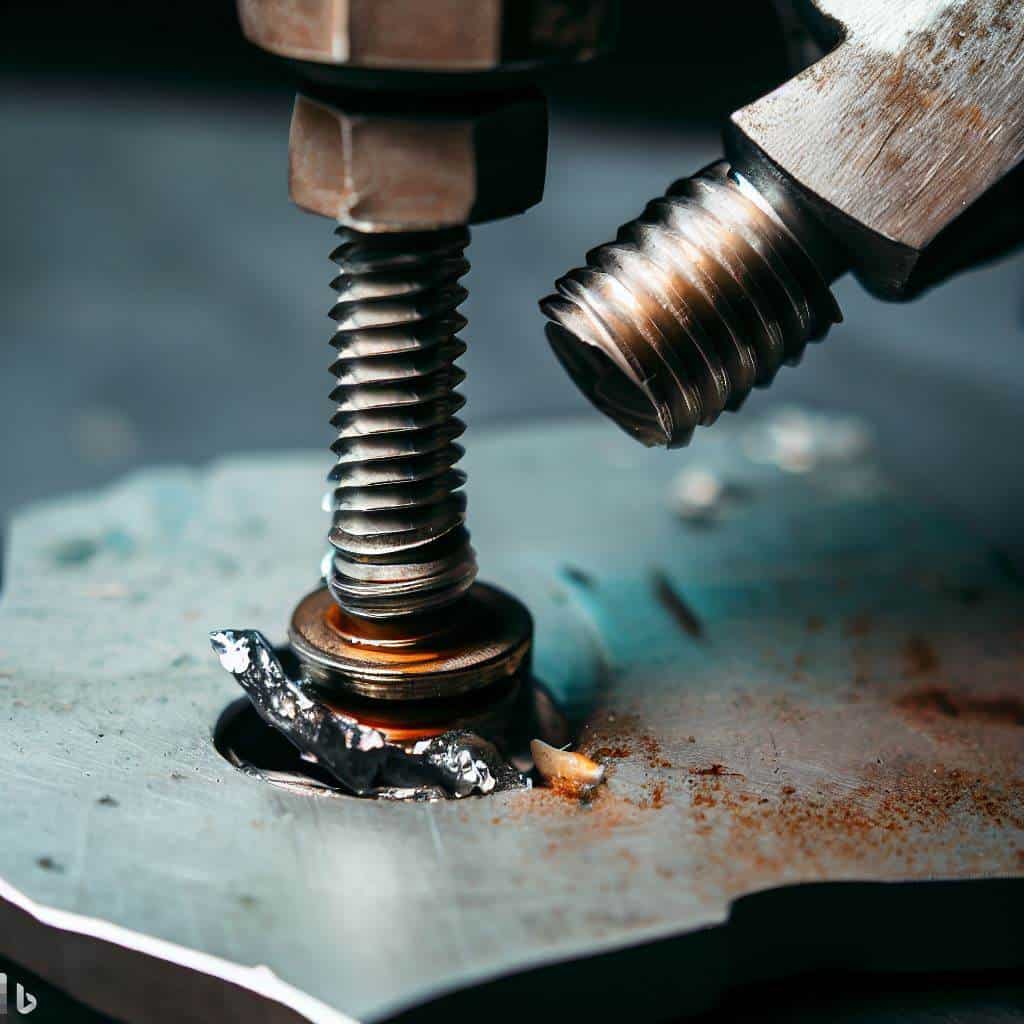
Broken tap removal methods
Tap Extractors
Tap extractors are one of the most common and effective methods for removing broken taps. These specialized tools are designed to grip the fractured tap’s flutes, allowing you to unscrew the broken pieces quickly and easily. To use a tap extractor:
- Apply light oil to the threaded hole and broken tap to reduce friction and smooth the extraction process.
- Choose the appropriate size tap extractor for the broken tap. The extractor should have a snug fit inside the tap’s flutes.
- Insert the extractor into the flutes of the broken tap, ensuring it is properly seated and has a secure grip on the tap.
- Turn the tap extractor counterclockwise, applying consistent pressure to unscrew the broken tap from the threaded hole.
EDM Machines
Another practical method for removing broken taps is an Electrical Discharge Machining (EDM) machine. This process erodes the broken tap with an electrically charged hexagonal electrode, disintegrating the tapping material without damaging the interior threads. To remove a broken tap with an EDM machine:
- Consult a machine shop or CNC machining services provider with EDM capabilities.
- Provide the shop with accurate measurements of the broken tap and the threaded hole to ensure a precise electrode is created.
- Allow the machine shop to perform the EDM process, eroding the broken tap until it is easy to remove without damaging the internal threads.
Drilling and Milling
In some cases, drilling or milling may be necessary to remove broken taps. This process involves carefully removing the tapping material by using specialized drill bits, carbide end mills, or other cutting tools. To drill or mill out a broken tap:
- Secure the workpiece in a drill press or milling machine, ensuring it is properly aligned and stable.
- Choose a carbide end mill or appropriate drill bit to cut through the tapping material. For most taps, a carbide end mill will work well. However, a specialized drill bit is necessary for small taps or taps made from more challenging materials.
- Apply cutting fluid to the broken tap and the cutting tool, ensuring adequate lubrication during the drilling or milling.
- Begin the drilling or milling process slowly and with a controlled feed rate, carefully removing the broken tap material without damaging the internal threads. This process may be time-consuming and requires patience and precision.
Understanding and utilizing these standard methods can effectively remove broken taps and salvage your threaded holes, saving time and resources.
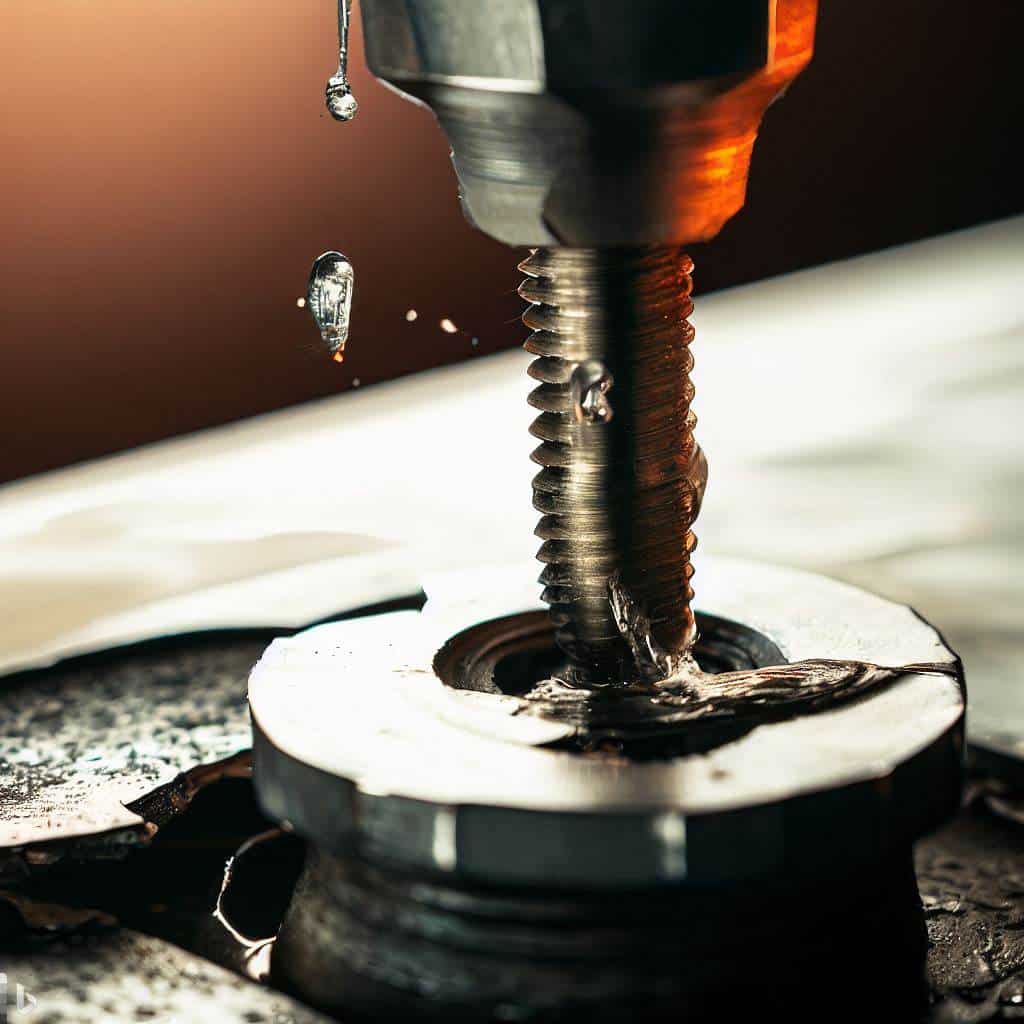
Broken Tap Removal Guide: Step-by-Step
1st. Assessing the Situation
Before attempting to remove a broken tap, it is essential to assess the situation carefully. Determine the type of tap, the material produced from it, and the material of the workpiece. Also, examine the broken tap’s position within the threaded hole and whether any part of the tap is protruding above the surface.
2nd. Choosing the Right Method
Based on your assessment, determine the most appropriate method for removing the broken tap. Consider the size of the tap, the complexity of the threaded hole, and the tools and resources you have available. Tap extractors are generally suitable for most situations, while EDM machines and drilling or milling techniques may be necessary for more challenging cases.
3rd. Removing Broken Taps with Tap Extractors
- Lubricating Oil: Apply a light oil or cutting fluid to the threaded hole and the broken tap. This lubrication helps to reduce friction and makes the extraction process smoother.
- Tap Extractor: Select the correct size tap extractor for the broken tap. Ensure it fits snugly within the flutes of the tap to provide a secure grip.
- Threaded Hole:
- Insert the tap extractor into the flutes of the broken tap, ensuring it is properly seated.
- Carefully turn the tap extractor counterclockwise, applying steady pressure to unscrew the broken tap from the threaded hole.
- Continue until the tap completely extracts.
4th. Removing Broken Taps with an EDM Machine
- CNC Machining Services: If you cannot access an EDM machine, consult a machine shop or CNC machining services provider with EDM capabilities.
- Hexagonal Electrode: Provide the shop with accurate measurements of the broken tap and the threaded hole, allowing them to create a precise electrode for the EDM process.
- Tapping Process: Allow the machine shop to perform the EDM process, eroding the broken tap with the electrically charged hexagonal electrode until it can be easily removed without damaging the internal threads.
5th. Removing Broken Taps by Drilling and Milling
- Carbide End Mill: Choose a carbide end mill or an appropriate drill bit capable of cutting through the tapping material.
- Air Drill or Pneumatic Drill: Secure the workpiece in a drill press or milling machine, ensuring it is properly aligned and stable.
- Drilling out Broken Taps: Apply cutting fluid to the broken tap and the cutting tool. Begin the drilling process slowly and with a controlled feed rate, carefully removing the broken tap material without damaging the internal threads.
- Milling out Broken Taps: If drilling alone is insufficient, switch to a milling tool and continue the process. Maintain a slow speed and controlled feed rate, carefully milling away the tapping material until it is completely removed from the threaded hole.
By following these steps and choosing the appropriate method, you can successfully remove broken taps and preserve the integrity of your threaded holes.
Alternative Methods
A. Chemical Solutions
In some cases, chemical solutions may be an effective alternative for removing broken taps, especially when dealing with aluminum alloys or other materials that react with specific chemicals.
- Alum Solution: Combine boiling water and alum powder to remove a broken tap using an alum solution. Immerse the workpiece with the broken tap in the solution and allow it to sit for several hours or until the tapping material has dissolved. The alum solution only reacts with the tapping material and will not damage the workpiece or the internal threads. Once the tap has dissolved, clean the threaded hole thoroughly to remove any remaining residue.
- Nitric Acid Solution: A nitric acid solution may be more effective for taps made from harder materials, such as high-speed steel or carbide. However, this method should be used cautiously, as nitric acid is highly corrosive and can damage the tap and the workpiece if not used correctly. Follow proper safety procedures for nitric acid, including eye protection and gloves. Carefully apply the nitric acid solution to the tap using a small brush, allowing the acid to dissolve the tapping material without damaging the workpiece or the internal threads.
B. TIG Welding
Another alternative method for removing broken taps is TIG (Tungsten Inert Gas) welding. This method can be beneficial when dealing with larger taps or taps made from materials that are difficult to extract using other methods.
To remove a broken tap using TIG welding:
- Secure the workpiece in a stable position, ensuring the broken tap is easily accessible.
- Attach a sacrificial piece of metal, such as a small bolt or an Allen wrench, to the broken tap using beeswax. The sacrificial metal will serve as a welding point and help protect the internal threads from damage.
- Carefully weld the sacrificial metal to the broken tap using a TIG welder. The heat from the welding process will help to loosen the tap and create a strong bond between the sacrificial metal and the tap.
- Once the weld has cooled, use vise grips or pliers to turn the sacrificial metal counterclockwise, extracting the broken pieces from the threaded hole.
These alternative methods can provide additional options for removing broken taps when traditional techniques may not be suitable or practical. Always exercise caution when using chemicals or welding equipment to ensure a safe and successful tap removal process.
Tips and Tricks for Avoiding Tap Breakage
To minimize the occurrence of tap breakage and ensure a successful tapping process, follow these tips and guidelines:
1.Proper Use and Maintenance of Taps
- Always clean and inspect your taps before use. Check for signs of wear or damage, and replace any damaged fixtures to prevent breakage during the tapping process.
- Ensure that your taps are sharp and in good condition. Dull cutting edges can increase the risk of tap breakage.
- Store your taps in a clean, dry environment to prevent corrosion and protect their cutting edges.
2.Choosing Quality Materials
- Invest in high-quality taps from durable materials like high-speed steel, carbide, or cobalt. These taps are designed to withstand the stresses associated with the tapping process and are less likely to break.
- Avoid using poor-quality taps made from inferior raw materials, as these are more susceptible to breakage.
3.Tapping Techniques
Use the appropriate tap for the material you are working with. Different materials require different types of taps, so consult the manufacturer’s guidelines to ensure you are using the correct tap for your application.
- Ensure the bottom hole diameter is appropriate for the specific tap size. An incorrect hole diameter can cause excessive stress on the cutting edges and lead to tap breakage.
- Apply sufficient lubricating oil or cutting fluid during the tapping process to reduce friction and prevent tap overheating.
- Use a tap guide or tap wrench to ensure proper alignment and even pressure during the tapping process. Misaligned taps can bind within the hole, increasing the risk of breakage.
- Begin the tapping process slowly, gradually increasing the feed rate as the tap cuts the internal threads. This controlled approach reduces stress on the tap and decreases the likelihood of breakage.
Following these tips and practicing proper tapping techniques can minimize the risk of tap breakage and ensure a successful and efficient tapping process.
Conclusion
Importance of Safe and Effective Tap Removal
Removing broken taps is critical to maintaining the functionality and integrity of threaded holes in various applications. A safe and effective tap removal process ensures the workpiece is not damaged and the internal threads remain intact. You can successfully remove broken taps by employing appropriate techniques and tools while minimizing the risk of further damage or complications.
Best Practices for Tap Removal and Maintenance
Follow these best practices to ensure a smooth and efficient process and minimize broken taps:
- Regularly inspect and maintain your taps, keeping them sharp, clean, and in good condition.
- Invest in high-quality taps made from durable materials, as they are less likely to break during use.
- Apply proper tapping techniques, using the appropriate tap for the material being worked on, and ensure correct hole diameter and alignment.
- Depending on the specific situation, utilize suitable tap removal methods, such as tap extractors, EDM machines, or drilling and milling techniques.
- Consider alternative tap removal methods, such as chemical solutions or TIG welding, when traditional techniques are ineffective.
By following these best practices and understanding the various methods available for removing broken taps, you can successfully maintain the functionality and longevity of your threaded holes while avoiding costly mistakes and time-consuming repairs.
FAQS
Needle nose pliers may be practical when the broken tap protrudes from the surface and can be easily gripped. However, this method can be challenging if the tap is broken inside the hole, and there is a risk of damaging the interior threads. In most cases, it’s better to use a tap extractor or another specialized method for tap removal.
When a tap breaks during the tapping process, it is crucial to remain calm and avoid panicking. Assess the situation and determine the most appropriate method for removing the broken tap, whether using a tap extractor, EDM machine, drilling, or another technique. Once the tap has been removed, you can re-tap the hole if necessary.
Using a broken drill for tap removal is generally not recommended, as it may not provide a reliable extraction method and may cause further damage to the internal threads. Instead, opt for a specialized tool like a remover or alternative methods like EDM or drilling.
To prevent tap breakage, ensure your taps are sharp, adequately maintained, and made from high-quality raw materials. Use appropriate tapping techniques, such as proper alignment, hole diameter, and lubrication. Also, avoid applying excessive force or pressure during the tapping process, which can cause the cutting edges to become stuck and eventually break.
While a cold chisel might be helpful in some cases, there are more effective and reliable methods for tap removal. Cold chisels can damage the internal threads and may not provide the precision needed for a successful extraction. Opt for specialized tools like tap extractors or methods like EDM or drilling for better results.
It is vital to use compressed air with tap extractors, drilling, or EDM to ensure successful tap removal. Compressed air can clean debris from the threaded hole during the tap removal, but it is not a stand-alone method.
Yes, chemical solutions like alum or nitric acid can dissolve broken taps, especially those made of aluminum or high-speed steel. However, these methods require caution, as they can damage the workpiece or internal threads if not used correctly.
A reliable method for removing a broken tap depends on the specific situation and available tools and resources. Generally speaking, tap extractors are the most common method for tap removal, while other techniques like EDM, drilling, or chemical solutions serve as alternatives when necessary.
A Dremel tool, with appropriate attachments, may be helpful in some tap removal situations, mainly when used to grind away the tapping material carefully. However, this method requires precision and patience to avoid damaging the internal threads. It is generally advisable to use specialized tools like tap extractors or alternative methods like EDM or drilling for more effective and reliable results.
